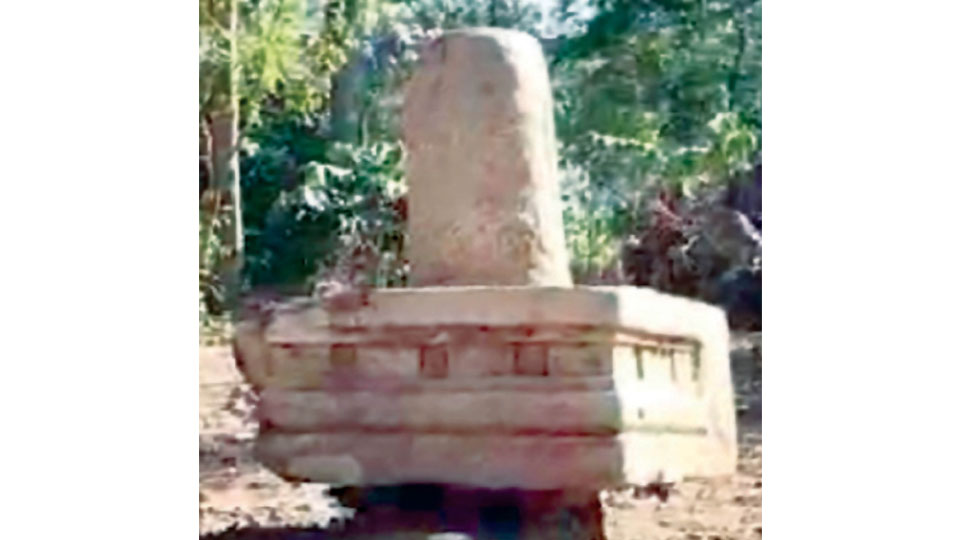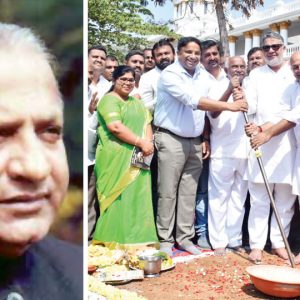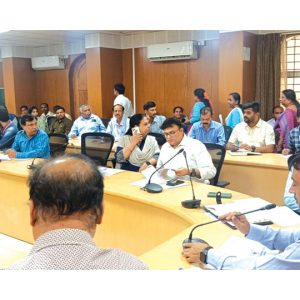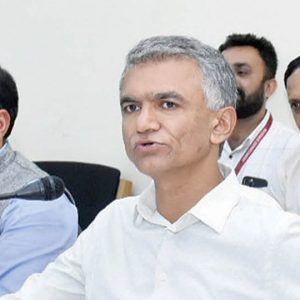Madikeri: A massive Shivalinga, believed to dating back to the era of Pandavas, has been unearthed in South Kodagu, evoking astonishment among the residents and coffee estate owners.
Situated at the base of Kunda Hill (Kunda Betta) in Ponnampet taluk of South Kodagu, this giant Shivalinga was uncovered beneath a majestic tree within the coffee plantation owned by Gummattira Kilan Ganapati and his brother Gummattira Darshan. The Gummattira family’s land, where this remarkable find occurred, boasts an illustrious history spanning nearly 800 years.
Nestled beneath a ‘goli’ tree
Upon the discovery, senior priests and elders from the Gummattira family, who visited the site, expressed unanimous agreement regarding its profound significance. Measuring 4 feet in height and 3 feet in width, the ancient Shivalinga was nestled beneath a ‘goli’ tree, believed to emanate immense divine power. Plans are underway to construct a temple at the site in the future, symbolising the historical and spiritual importance embedded in the land.
The revelation came to light through Kalyatanda Ajjappa, who disclosed the existence of a buried Shivalinga within the coffee estate. Despite an initial search around a tree, it yielded no results. Later, a decision was made to excavate the area using heavy machinery. To everyone’s surprise, a colossal Shivalinga was discovered deep within the base of the tree.
Excavation yields intriguing artefacts
Further excavation efforts unveiled an array of intriguing artefacts beneath the Shivalinga, including a ‘tirthanala,’ an elephant pillar, stone bricks, a Somasutra, a ‘Panipeeth’ and a host of base stones. Each item has been meticulously preserved and sheltered, with plans to incorporate them into the construction of the upcoming temple.
Residents and priests have drawn attention to the notable proximity of the Shivalinga’s discovery to the revered Eshwara Temple atop Kunda Betta. A stone temple without a door believed to have been constructed in a single night, stands not far from the discovery site, where Lord Shiva is still worshipped at Kunda Betta.
Kalyatanda Ajjappa’s guidance
It is speculated by the priests that the installation of the Shivalinga may date back to the time of the Pandavas’ ‘Ajnathavasa,’ suggesting a purposeful act to facilitate their worship of Lord Shiva during their sojourn in the region.
However, it was noted by a team of priests from Karkala that a portion of the Shivalinga had suffered damage in the past. In historical context, Shivalingas were traditionally crafted using white and wild stones, consistent with the materials used in constructing this particular Shivalinga.
The Shivalinga initially obscured in mud, underwent ceremonious worship upon its recovery. Under the adept guidance of Kalyatanda Ajjappa, the intricate process involved lifting the Shivalinga, a task that proved challenging to accomplish directly, necessitating the use of a rope. Subsequently, following Ajjappa’s counsel, the Shivalinga was skilfully pulled with the assistance of calves.








Recent Comments